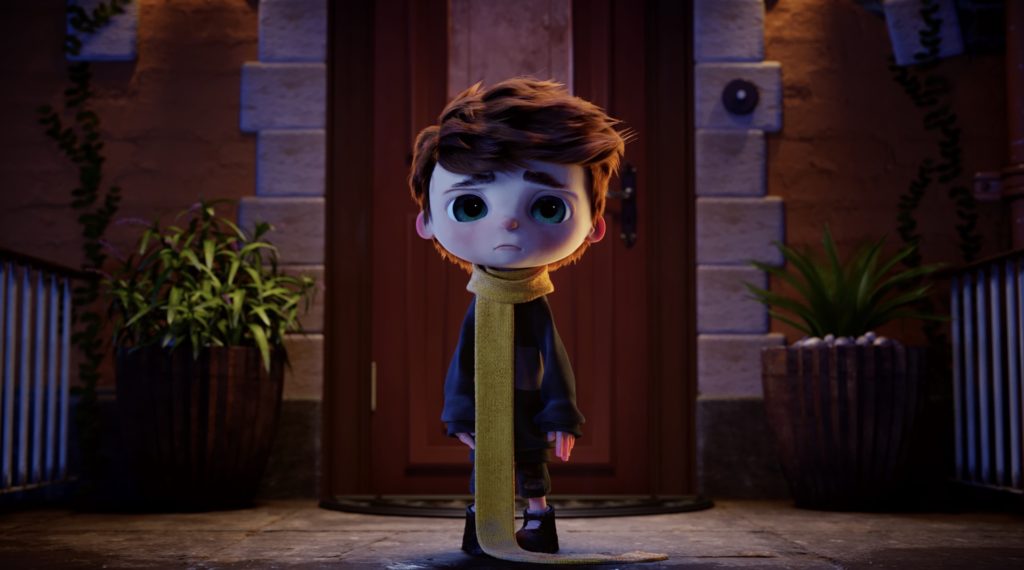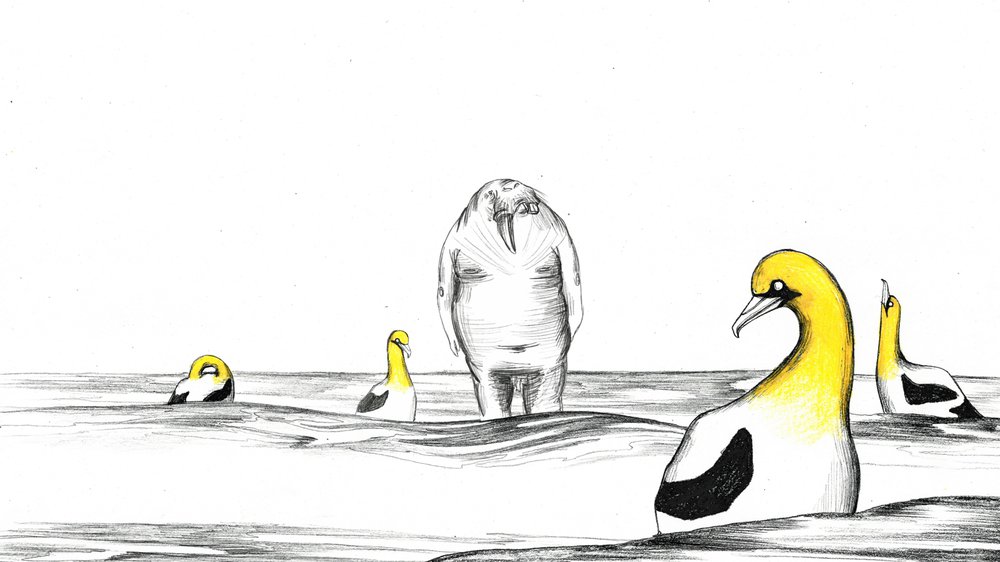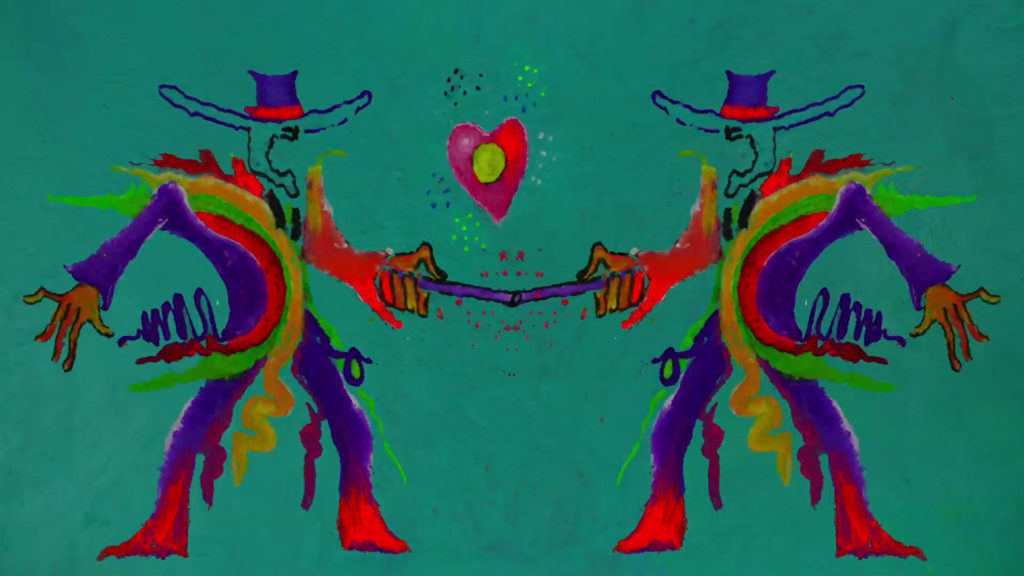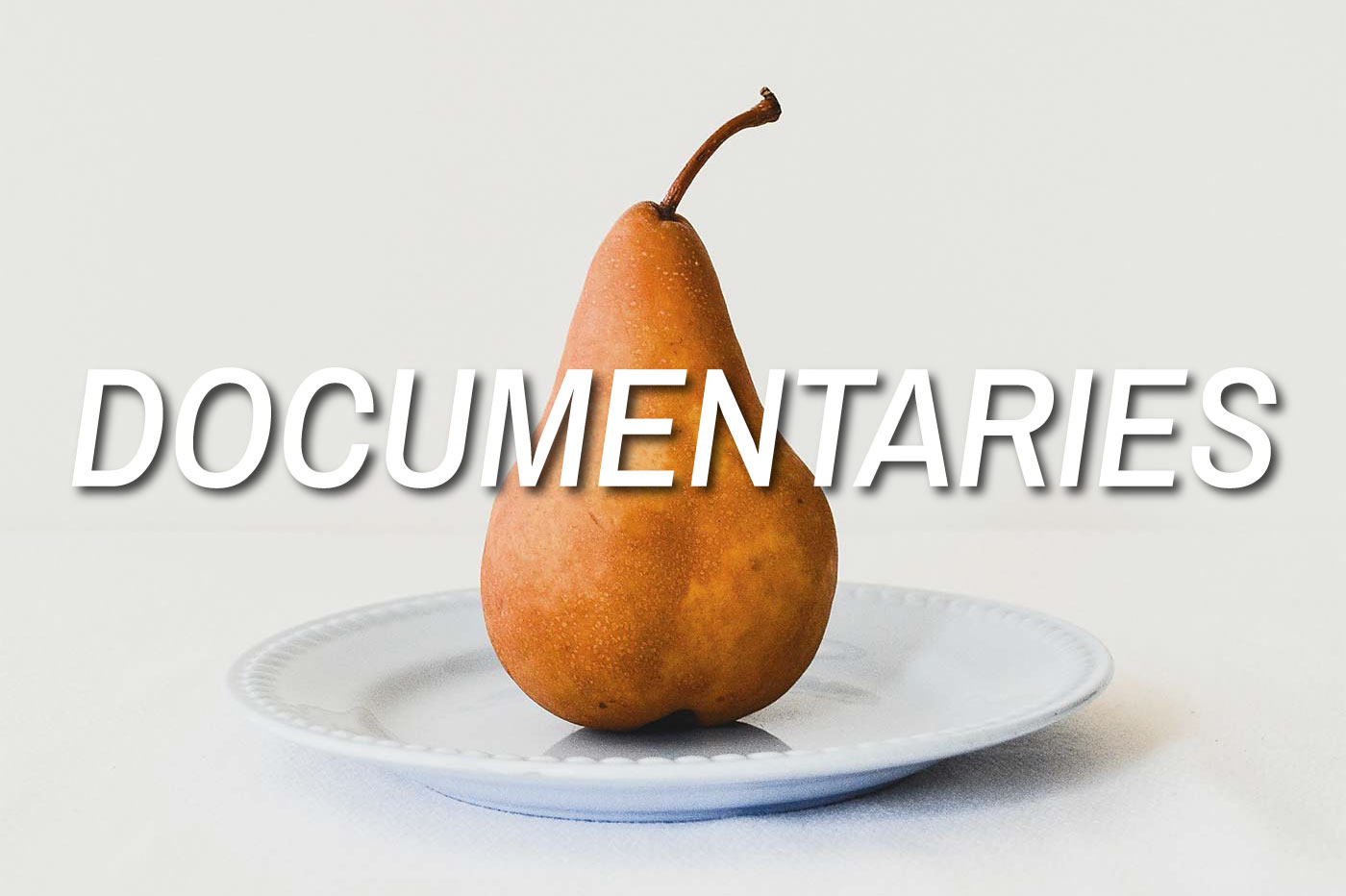Directors Chair – Part Deux

Interview with Helen Hilario, Director of the animation short, “Umbrella
On What She Could Tell us of the True Story of Umbrella
Maryam (M): I’m so curious to ask you about the true story behind Umbrella. Is it your family’s story?
Helena (H): Everyone asks me. After people watch the film and see that it’s inspired by a true story they feel like, “Oh my God, what happened?! They all want to know what the true story was.
It’s hard to talk about the story without giving away any spoilers. So basically in 2011, I had just moved to LA from New York. My whole family lives in Brazil and my sister, who lives in my hometown, Palmas, she does volunteer work at this orphanage. In December 2011, she went close to Christmas time to give toys to the kids. And like in the film, she brought a big box full of toy. The kids were super excited and happy because it was close to Christmas. And then one little boy, he was about 5 at the time, he saw the box and he went there and searched for toys. And then he was so sad, he didn’t pick any of the toys, and he went close to the window and kept staring outside. And my sister saw that something was wrong with him, so she goes up to him with some other toys and asks him, ‘what would you like, we have so many toys here?’ And then he said that he wanted an umbrella. And she was like, ‘what do you want an umbrella for, it’s such a beautiful day outside? It’s sunny, it’s not raining, why do you want an umbrella?’ […] And that’s when he told her why. It’s the essence of what was shown in the film, but we don’t want to give it away here.
And then my sister called me when she left and we both cried over the phone. For us it touches so deep because you know, we always judge people, we judge by the actions or by the way that they look. The way that we wrote the story was about empathy. Because in the film, the little girl, she’s in that place that she doesn’t want to be there. And for him, the umbrella represents a special memory. So, the message that we wanted to put out there is about empathy, it’s about kindness, that you cannot judge people, you never know what the other is going through, we don’t know what it takes. I feel that we just expose only the good side, especially with social media: our own life is not like a perfect story. You have no idea what’s going on in other people’s lives.
On the Production Process and Her First Foray into Animation
“Umbrella” was a long-time dream. It was 8 years, not in the making but in wanting to bring this project to life.
I wrote my script for over a month over the holidays in 2011-2012. I really saw this as an animation. But back then, I didn’t work with animation, I didn’t even know what it would take to film an animation. I was so naïve.
And then in 2014 I went to Brazil and I opened my company there with my husband Mario, who directed Umbrella with me, and we decided we wanted to get better in animation and this was one thing that we needed in order to make this film and tell this story. I planned it over the years financially, so I’d be able to produce it.
As for the design of the characters, I wanted to work with Victor Hugo: he’s an amazing 3D artist, and worked on many great projects at Disney, Marvel, etc. When I met him and told the story of Umbrella, he was he said, ‘I love this project, I really want to help’. It was so interesting that along the way, the people that came on board were touched on a personal level and it was so amazing to see how everyone graced the project.
We had a very small team, we repeat a lot of the credits, but in fact we had like five 3D artists lead by Alan Prado, our 3D supervisor and 5 animators led by Hannry Pschera, our animation supervisor.
We got an amazing composer involved as well, Gabriel Dib, he’s Brazilian but he lives in LA. He put all his heart and soul in the original music, it’s such an important piece. We had a five hour recording session with an orchestra of 30 musicians as well and I cried from the beginning to the end, because I was feeling like here was my baby, being played out with violins; it was such an emotional ride.
On the Animation Design Inspired by Her Family
Most of the characters in the film are inspired by someone from my family. The mom, she looks like my sister; the little boy Joseph, he looks like my nephew; and the old lady from the orphanage, she looks like my Mom. And one of the kids- the little boy who grabs the rocket- he looks like my father: his skin is a little dark and his hair has this particular cut. There’s my two aunts, one with short hair and another with long hair; my grandmother, and my grandfather who passed away many years ago. So we tried to have a little thing of each of our family members; it’s a very personal film.
Since the beginning we chose to tell the story without dialogue because we felt it could be more universal, that people could understand it anywhere the film goes. Especially with it being a Brazilian production, then we wouldn’t have to subtitle it everywhere that we go. And the music has a very important role because it helps to tell the story.
We are developing other projects right now, 2D and 3D animations and features. I feel that it’s good to give a voice to women in animation, to show that we are able to tell stories. It’s such a boy’s club, right? It is mostly men. It’s good timing also to show that as a small studio, with Brazilian talent as well, that we’re able to produce animation, not only big, mainstream animation studios.
It was a truly beautiful process, for real. I’m not just saying it now that the film is completed. I never thought I would direct something in my whole career, it was not something that I aimed for or dreamed of doing. The whole work that I do is production and business development of the company, but for Umbrella I couldn’t see anyone else doing this beside me, because it’s such a personal story.
The most rewarding thing is when people come to talk to us after the film. It’s amazing the response that we’re having: so many people cry when they’re watching it.
My nephew, he’s 11 now, what’s interesting is, I was in my hometown a few months ago and I screened it at home to him and to his friends, and then some of his friends were emotional. I thought they wouldn’t care about it, but they were crying, and they were saying ‘oh, remember the classmate that we had at school that did this, we shouldn’t judge, we don’t know what they’re going through.’ It was so nice to see that they understood the message. I feel that this is the most powerful thing, to put the message of kindness and empathy out there.
More on the Film’s Inspiration
M: I’m guessing the kid who inspired this story, you haven’t had a chance to meet him again, he hasn’t seen the movie?
H: No, we haven’t met him since. A particular situation inspired the story but we changed quite a bit to turn it into a screenplay. I was talking to my sister the other day and we really, really hope that this umbrella thing for him was like kid’s thoughts, that it did not affect his life the way it affected ours, that it was not something that he carried for his whole life.
M: How did you come up with the idea for the umbrella store?
Two years ago, I was in London and I was walking on the street with Mario my husband and his family, and when I looked on the side, they had this huge store, James Smith and Sons. It’s in the middle of a very modern area of London, and they have this umbrella store that is from the 1800s. I’d never seen an umbrella store. I never saw that in Brazil. I spent over an hour in there taking photos of everything and looking at the umbrellas, and I was like, ‘Mario, we need an umbrella store for “Umbrella.” Like imagine if Joseph, with his fascination for umbrellas, spent his life having umbrellas and sharing this with other people. And funny, after that, I went to Japan and other places and I always see umbrella stores now. I see umbrellas everywhere.
And then recently I went to London before going to a film festival and 2 years later I came back to the umbrella store and I bought a beautiful yellow umbrella. I didn’t cry this time because the first time that I was there I looked like a crazy person, crying in the middle of the store, like people must have thought ‘what’s wrong with this girl?’ And now in my living room I have a beautiful, handmade yellow umbrella.

+Q&A with Natasza Cetner, Creator of the Short Animation “Nigel”
1. I just looked up the very tragic and touching story of Nigel No Mates, but could you tell it to us in your own words, how you heard about it and what made you want to honour him with this animation? What do you think his story has to teach us about our own tendencies towards isolation, idealization and delusion?
I tend to read a lot of weird articles about animals and especially birds. My favourite stories include the tales of: Thomas the Goose, the blind goose that became an LGBT icon; Petra the Swan that fell in love with a pedalo boat; a seagull that has a habit of stealing Doritos from a shop; or a parrot that escaped from its owner and returned after two years but now it speaks Spanish. Those kinds of absurd stories just make me feel better about the world, that maybe it is not as grey as we tend to think when we get stuck in everyday routines and bureaucratic crap; that sometimes the world and especially nature can surprise us. The story of Nigel touched me significantly, mostly because his story is so relatable in terms of his feelings not being reciprocated and he seemed to be stuck in this delusional and repressing loop. He kept building nests and grooming the statue for few years, but maybe he was happy in that state?
We tend to think that he was suffering as the statue was not alive, but maybe the situation was good for him and he did not feel incomplete. That is one of the beautiful aspects of Nigel’s story – that we will never know the truth. There is a tragedy in his tale- he was found dead right next to his love- but also Nigel’s devotion is truly touching. One of the things I wanted to say through this film is to try to tolerate other people’s choices no matter how
weird they might seem to be. When it comes to Walrus’ story in the film it talks more about how hard it is to accept it when things do not go our way and we just have to live with it.
2. Can you tell us a bit about your novel figure of the walrus who seems to be playing the role of the human researchers who set up the gannet statues? Why do you think you created this lumping walrus with a broken tusk and what does he stand in for?
The event of destroying the statue never happened, it was only created for the sake of exaggerating the story and adding more drama. That is one of the reasons why I chose to change the volunteer living on the island to move away from making this film a literal document and letting it get more fantastical. The statues were put on the island to attract gannets so that a new colony of sea birds could be created and the ecological equilibrium could be brought back to Mana Island. I am pretty sure that no one expected Nigel to actually fall in love with a statue. There is a theory that Nigel was rejected from his original colony, which is why he arrived alone and was socially skewed as he did not want to bond with other birds that arrived on the island. The broken tusk and overall tired mood of the Walrus character was used in the film in order to show that he was somehow living on the island for years, if not decades, which is also shown by the statues being in need of repainting and falling apart. In reality, the statues have been on Mana Island since the 80’s. I wish I showed in the film somehow, that Nigel was actually the hero of the story, as without him the other birds that started the colony would never have come.
3. Can you tell us a bit about your process in creating this animation, how long it took to put the drawings together? Are they made with charcoal or other materials?
The overall process of working on the film, from developing the idea to the finished piece, lasted from October 2018 to the end of June 2019. Being a student film at the Royal College of Art, the production time was strictly limited. That means that I was working every day on everything at the same time and freaking out that it would never be done. First, all the animations were done digitally in order to check the timing and that it works well, then all the
frames were printed to then be traced with soft pencils and crayons. The ending process was scanning and compositing in After Effects.
4. The detail of the pile of dead rotting fish that he had brought to his lover-statue was very clever. Do you know if this was an actual behaviour of Nigel’s? Any other details of his behaviour that you researched and tried to include?
I don’t think he was actually offering any fish, but I had to exaggerate Nigel’s behaviours for the audience to understand the motivation of the main character. It can be tricky sometimes in animation to portray something in such a short time and without any voiceover. From what we know he was carefully building a nest out of seaweeds and little twigs, chatting to the statue and grooming it. About the pile of fish – I had to exaggerate the accumulation of them to show that the story was taking place over a much longer amount of time.
5. Are you working on any other projects at the moment that you might like to tell us about?
I am currently working with Cardel Entertainment on a new animated short film that would tell the story of a famous chicken known as Headless Mike. He lived without his head for 18 months in the 1940s and then became a circus star, being shown with such !curiosities! like a two-headed baby or three-legged man. It will be a grotesque, graphic film, with twisted dark humour elements, the theme of animal abuse in entertainment, and questioning the morality
of Mike’s owner’s actions. I also got really interested in making little felt animals and designing linocuts, just as a break from animation to make something more physical.

Q&A with Tomás Welss, Creator of the animated short “Magic Dream””
1. Can you tell us a little more about the star of “Magic Dream”, your “beloved creature who changed your life”. ?
This main character of my painted animation, “Magic Dream”, is the Magician, with his colourful and unstable physiognomy that twists and changes according to each frame that exposes his mood, whether shy and inept, or dominant and overflowing.This character is exposed with his magical performance, in front of an audience eager to laugh. “I have paid, so make me smile.”
The Magician has been my partner- although many times my enemy, due to his unpredictable character- for five years. From the beginning I was not interested in a character based on
comfort and well-being, but rather an unstable one, as a reflection of our abusive and competitive contemporary world.
2. I was surprised by the sexual turn during the second half of the animation! Can youexplain a bit more about the symbolism behind it?
From the middle of Magic Dream onwards, we can already see that the main character (the magician) has not achieved the desired success with his routine on stage. He has tried from the beginning, but in the effort to seduce the public, his magical acts failed and some characters that are part of the spectacle become independent of his control. The scene suggests that the protagonist loses power.
The rabbit, instead of getting out of the hat, writhes uncomfortably and returns to its place of origin. It rejects the stage environment and his boss. The magician is frustrated, and his irritation becomes visible. However, he tries to cover his embarrassment and ineffectiveness with music and strained dance. He then tries to extract the rabbit from the hat again, but instead a colourful and brilliant harlequin appears, much more beautiful and seductive than the magician. This new character is disturbing the magician’s routine. Moreover, it surpasses him in splendour, dance and attractiveness. The Harlequin, ending its performance on stage, sharply throws the magician out of the scene. The classical obsession of fight and thirst of power arises, especially in the humiliated magician.
His frustration increases, and he returns shyly to the stage. He tries to enchant his public again, while two women, female dancers, enter the scene and help him with the next performance. Instead of continuing, the failed Magician takes out his accumulated frustration and fury on both women, to the point that he bursts them over his head juggling. The voyeur audience smiles vulgarly. Unloading anger against those weaker than us is a cowardly and
despicable act, and this scene marks sexism and gender violence against women in “Magic Dream”.
Nature, represented in the rabbit figure, at first hidden in the hat, will take charge of helping the ill-fated magician, giving him a last chance. Both female dancers, reborn with more energy, move away from the scene, embracing each other.
3. You mentioned that some of the themes of this piece and your other work are: power, failure, animals (nature), abuse, success, and gender issues.! Could you elaborate about how these themes arise in Magic Dream?
All my animated filmography addresses issues related to abuse, power struggles and gender themes, among other topics, sometimes leavened with humour, which facilitates communication.
These timeless concepts are possibly now more visible in our times, such as the desire for power, which is directly linked to failure, aberrations and abuses of human rights and gender violence, etc. They emerge in the painted pictures, in the moving forms of all the characters that made their way into Magic Dream.
I also feel and wanted to show that nature, represented through a small rabbit, remains both stable and solid, despite the destructive wave of humanity, and generous, helping us to grow and learn from our own mistakes and weaknesses. I wonder if the persistent obsession of men, regarding the unscrupulous desire for power and success, transgressing the norms of good behaviour and trampling his neighbour, will be bearable for the planet.
Human craving is blind and is reaching certain levels, in which the kind rabbit of Magic Dream, victim of human ignorance and pride and imprisoned in the Magician’s hat, will not be able to return.
The film is dedicated to my beloved father, who was a man of great values and is still with me always by my side, inspiring me to continue with my paintings, days and even nights. Since 2016, when he left us, I continued animating in my grotto, which was my therapy, my liberation, my artistic ritual and rescue. This is what has kept me alive.
4. Your artwork for “Magic Dream” is very beautiful. Can you tell us a bit about how
you created it, your technical process and how long it took to put together, etc.?
I am glad every time if someone feels touched or inspired from those thousands of acrylic paintings in motion movement and superimposed, one upon the other. I have always drawn and painted, since I was a child. I have also animated in two dimensions since I was a young boy. But in this case, I wanted to take away these paintings from the static, acquiring in this way another character and expression, by placing them in a timeline and venturing myself into the cinematographic language. I wanted to impregnate this work with symbols and metaphors. I did not intend to create a classical narrative, but to suggest universal contents that the viewer, with his or her interpretative ability, could complete. I chose the Dragon Frame Stop Motion software for the first time. The production process was very complex and almost frightening. In that sense I was somewhat naïve. I located the stop motion set in my own house and started the process of painting, lighting, playing with the spotlights, and stabilizing the light that came from below and above. This was a new adventure. The animation set had a hair dryer, knives, sticks, brushes, etc. I had a whole range of technical problems to solve and I remember that day, years ago, when
I finally had the technology controlled in my favour, which allowed me to begin painting as in the old days.
Months passed and the slowness of the production frightened me. The routine was a maximum of 10 paintings per day. Now I can say that those years culminated almost in a euphoric condition, enhanced by the silence and solitude of the animation set: in each stroke, in the ritual of painting, the cleaning of brushes, the use of my fingers to mould. I was wrapped in that set, hardly separable from the rest of my existence. I think that 5-year phase
of pure creation filled this work with emotion and passion, though I always followed the story board with an intellectual discernment in terms of visual composition: the speed of the movements that is related to the amount of in-between paintings and as a great find, the use of a knife to scrape the thicker layers, due to hundreds or thousands of underlying, superimposed paintings. The resource of scraping and !destroying! the figuration, recovering certain flashes of paintings made months or years before, gave me the possibility to reconstruct the old and forgotten, bringing those broken and abstract images back, frame by frame. The tremors in Chile and the strong blows that the set received, stopped being a problem. This refuge or shelter on the set, crossing summers, winters and tremors, made me grow as an artist and a human being. Creation itself has no time limit but at some point, you have to decide to finish. It was hard because in a way, those unforgettable nights sitting in the studio for my daily animation ritual powerfully brought me closer in connection with my recently disappeared Dad. My Dad was a great painter, but he never saw the final film. I had and have to find a new way to live with and without him.
I would love to show my painted film especially in countries where people might be a bit frightened by it, where there are a lot of differences, because the differences are a point of debate and maybe a bridge to understand our cultures. Art is a bridge, and festivals are a melting pot and a place to encounter and talk about concepts and issues which push us to create from what is inside, and present it.
You may also like
Documentaries 2020
Tellus integer feugiat scelerisque varius. Sit amet volutpat consequat mauris nunc congue nisi. At u

